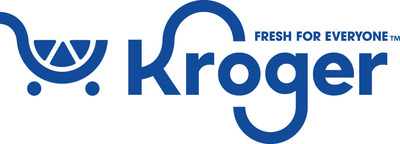CINCINNATI, June 24, 2021 /PRNewswire/ -- The Kroger Co.'s (NYSE: KR) Board of Directors approved a dividend increase from 72 to 84 cents per year. The next quarterly dividend of 21 cents per share will be paid on September 1, 2021 to shareholders of record as of the close of business on August 13, 2021.

Kroger's quarterly dividend has grown at a double-digit compounded annual growth rate since it was reinstated in 2006. This marks the 15th consecutive year of annual dividend increases. The company continues to expect, subject to board approval, an increasing dividend over time.
"In recognition of our strong performance during the last year, we are proud to increase the quarterly dividend at a higher rate than our historical average," said Rodney McMullen, Kroger's Chairman and CEO. "This increase reflects the Board of Directors' confidence in the strength of our free cash flow and our ability to deliver consistently strong and attractive total shareholder returns."
Capital Allocation Strategy
Kroger remains committed to investing in the business to drive long-term sustainable net earnings growth, maintaining its current investment grade debt rating, and returning excess free cash flow to shareholders via share repurchase and a growing dividend over time. The company actively balances the use of its adjusted free cash flow to achieve these goals.
About Kroger
At The Kroger Co. (NYSE: KR), we are dedicated to our Purpose: to Feed the Human Spirit™. We are, across our family of companies nearly half a million associates who serve over nine million customers daily through a seamless digital shopping experience and 2,800 retail food stores under a variety of banner names, serving America through food inspiration and uplift, and creating #ZeroHungerZeroWaste communities by 2025. To learn more about us, visit our newsroom and investor relations site.
This press release contains certain statements that constitute "forward-looking statements" about the future performance of the company. These statements are based on management's assumptions and beliefs in light of the information currently available to it. Such statements are indicated by words or phrases such as "achieve," "believe," "contemplates," "continue," "deliver," "expect," "future," "guidance," "strategy," "target," "trends," and "will." Various uncertainties and other factors could cause actual results to differ materially from those contained in the forward-looking statements. These include the specific risk factors identified in "Risk Factors" in our annual report on Form 10-K for our last fiscal year and any subsequent filings, as well as the following:
Kroger's ability to achieve sales, earnings, incremental FIFO operating profit, and adjusted free cash flow goals may be affected by: COVID-19 pandemic related factors, risks and challenges, including among others, the length of time that the pandemic continues, new variants of the virus, the effect of the easing of restrictions, lack of access to vaccines for certain populations and the extent of vaccine aversion, the potential for future spikes in infection and illness rates and the corresponding potential for disruptions in workforce availability and customer shopping patterns, re-imposed restrictions in the event of resurgence, and interruptions in the global supply chain or capacity constraints; the pace of recovery when the pandemic subsides; labor negotiations or disputes; changes in the unemployment rate; pressures in the labor market; changes in government-funded benefit programs and the extent and effectiveness of any COVID-19 stimulus packages; changes in the types and numbers of businesses that compete with Kroger; pricing and promotional activities of existing and new competitors, including non-traditional competitors, and the aggressiveness of that competition; Kroger's response to these actions; the state of the economy, including interest rates, the inflationary and deflationary trends in certain commodities; changes in tariffs; the effect that fuel costs have on consumer spending; volatility of fuel margins; manufacturing commodity costs; diesel fuel costs related to Kroger's logistics operations; trends in consumer spending; the extent to which Kroger's customers exercise caution in their purchasing in response to economic conditions; the uncertainty of economic growth or recession; changes in inflation or deflation in product and operating costs; stock repurchases; Kroger's ability to retain pharmacy sales from third party payors; consolidation in the healthcare industry, including pharmacy benefit managers; Kroger's ability to negotiate modifications to multi-employer pension plans; natural disasters or adverse weather conditions; the effect of public health crises or other significant catastrophic events, including the coronavirus; the potential costs and risks associated with potential cyber-attacks or data security breaches; the success of Kroger's future growth plans; the ability to execute our growth strategy and value creation model, including continued cost savings, growth of our alternative profit businesses, and widening and deepening our strategic moats of fresh, our brands, personalization, and seamless; and the successful integration of merged companies and new partnerships. Our ability to achieve these goals may also be affected by our ability to manage the factors identified above. Our ability to execute our financial strategy may be affected by our ability to generate cash flow.
Kroger assumes no obligation to update the information contained herein unless required by applicable law. Please refer to Kroger's reports and filings with the Securities and Exchange Commission for a further discussion of these risks and uncertainties.
![]() View original content to download multimedia:http://www.prnewswire.com/news-releases/kroger-board-of-directors-raises-quarterly-dividend-17-percent-301319538.html
View original content to download multimedia:http://www.prnewswire.com/news-releases/kroger-board-of-directors-raises-quarterly-dividend-17-percent-301319538.html
SOURCE The Kroger Co.




